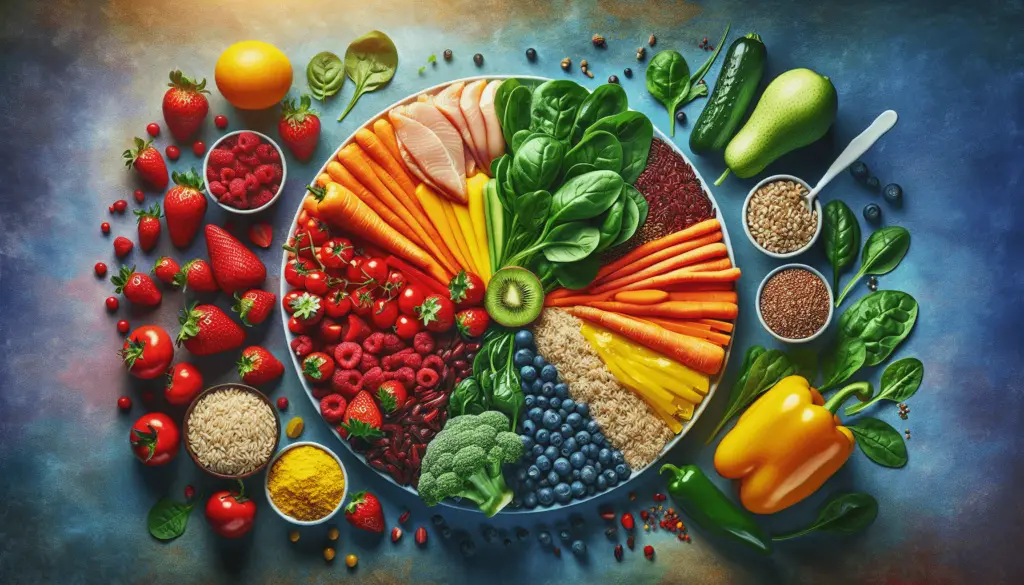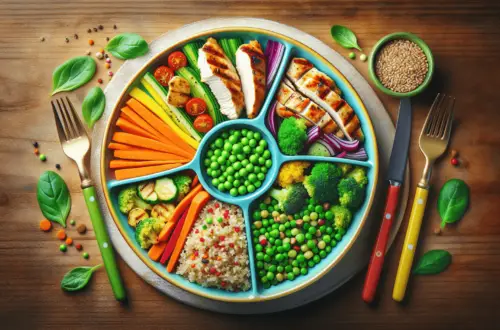Welcome to the informative article that will help guide you in finding the best diet for managing type 2 diabetes. As you navigate through the world of dietary options, it can be overwhelming to know where to start. Understanding the impact of food choices on your blood sugar levels is crucial in effectively managing your diabetes. By making informed decisions and incorporating healthy eating habits into your daily routine, you can take control of your health and well-being. Let’s explore the key components of a balanced diet for individuals with type 2 diabetes.
What Is The Best Diet For Managing Type 2 Diabetes?
Managing type 2 diabetes can be challenging, but one of the most important factors in controlling blood sugar levels is following a healthy and balanced diet. With so many diet options available, it can be overwhelming to know which one is best for managing type 2 diabetes. In this article, we will explore various diets and determine the best one for effectively managing type 2 diabetes.
Type 2 Diabetes Diet Goals
There are three main goals of a diabetes diet plan, according to the American Diabetes Association (ADA):
Goal 1: Achieve a Healthy Body Weight
Body mass index (BMI) uses your height and weight to determine how much body fat you carry. A BMI of 18.5 to 25 is considered to be a healthy weight range with a healthy amount of body fat.
Another measure, waist circumference, is considered by many to be a better indicator of excess abdominal body fat. A waist circumference greater than 40 inches for men and above 35 inches in women has been shown to increase the risk of developing health problems including type 2 diabetes.
The closer you are to a healthy body weight or waist circumference, the more likely you will be able to control, prevent, and possibly reverse the risks that accompany diabetes.
“Don’t get overwhelmed by thinking about how much total weight you have to lose,” advises Sandra Arévalo, MPH, RDN, CDE, a diabetes expert and spokesperson with the Academy of Nutrition and Dietetics. “Studies have shown that losing just 5% to 10% of your body weight will significantly improve your blood sugar levels as well as your cardiovascular health. So set short-term goals of losing just five to 10 pounds to start.”
Goal 2: Attain Normal Lab Results
Your physician will work with you to establish individual goals for blood glucose, blood cholesterol, and blood pressure. Regular testing will help ensure that your diet plan, exercise strategies, and medication, if necessary, are all working together to keep your results in healthy ranges.
Goal 3: Avoid Complications of Diabetes
Lifestyle changes, including adjustments to your diet and the addition of regular physical activity, can reduce your risk of developing heart disease, kidney disease, nerve damage, stroke, eye disease, and other long-term health problems that commonly occur in people with diabetes.
Top Diabetes-Friendly Foods to Eat
While no two diabetes diets will look the same, certain foods are considered staples for people with this disease because they support a healthy weight and blood sugar level. They include:
- Nonstarchy vegetables, such as broccoli and high-fiber fruit like apples
- Lean sources of protein, such as boneless, skinless chicken; turkey; and fatty fish like salmon
- Healthy fats, such as nuts, nut butter, and avocado (in moderation)
- Whole grains, such as quinoa and barley
- Nonfat or lowfat dairy, such as milk and plain yogurt
Foods to Limit or Avoid With Type 2 Diabetes
Likewise, certain foods are known to throw blood sugar levels out of whack and promote unhealthy weight gain. Foods that should be limited or avoided if you have type 2 diabetes include:
- high fat meat (fatty cuts of pork, beef, and lamb, poultry skin, dark meat chicken)
- full-fat dairy (whole milk, butter, cheese, sour cream)
- sweets (candy, cookies, baked goods, ice cream, desserts)
- sugar-sweetened beverages (juice, soda, sweet tea, sports drinks)
- sweeteners (table sugar, brown sugar, honey, maple syrup, molasses)
- ultra-processed foods (chips, microwave popcorn, processed meat, convenience meals)
- trans fats (vegetable shortening, fried foods, dairy-free coffee creamers, partially hydrogenated oil)
Understanding Type 2 Diabetes and Diet
Before diving into specific diets, it’s essential to understand how diet plays a crucial role in managing type 2 diabetes. Type 2 diabetes is a condition in which your body does not use insulin properly, leading to high blood sugar levels. Consuming the right foods can help regulate blood sugar levels and prevent complications associated with diabetes, such as heart disease and nerve damage.
The Mediterranean Diet
One of the most popular and well-researched diets for managing type 2 diabetes is the Mediterranean diet. This eating pattern emphasizes whole foods such as fruits, vegetables, whole grains, lean protein, and healthy fats like olive oil. The Mediterranean diet has been shown to improve blood sugar control, reduce inflammation, and lower the risk of heart disease.
The Ketogenic Diet
The ketogenic diet, or keto diet, is another diet that has gained popularity for its potential benefits in managing type 2 diabetes. This high-fat, low-carbohydrate diet aims to put the body into a state of ketosis, where it burns fat for fuel instead of glucose. While the keto diet can lead to rapid weight loss and improved blood sugar levels, it may not be suitable for everyone, especially those with kidney issues or a history of eating disorders.
The Low-Carb Diet
A low-carb diet is another effective approach for managing type 2 diabetes. By reducing carbohydrate intake, this diet can help stabilize blood sugar levels and improve insulin sensitivity. Foods to focus on include non-starchy vegetables, lean protein, and healthy fats. However, it’s essential to choose nutrient-dense carbohydrates and avoid processed foods high in sugar and unhealthy fats.
The DASH Diet
The Dietary Approaches to Stop Hypertension (DASH) diet is another eating plan that can benefit individuals with type 2 diabetes. This diet focuses on reducing sodium intake while emphasizing fruits, vegetables, whole grains, and lean protein sources. The DASH diet has been shown to lower blood pressure and improve overall heart health, which is crucial for individuals with diabetes who are at higher risk for cardiovascular disease.
Vegan and Vegetarian Diets
For those looking to adopt a plant-based diet, vegan and vegetarian diets can be beneficial for managing type 2 diabetes. Plant-based diets are rich in fiber, vitamins, and minerals, and have been shown to improve blood sugar control and lower cholesterol levels. However, it’s essential to plan carefully to ensure you are getting an adequate amount of protein and essential nutrients, especially vitamin B12, which is primarily found in animal products.
The Paleolithic Diet
The Paleolithic, or Paleo, diet is based on eating foods that our ancestors would have consumed during the Paleolithic era, such as lean meats, fish, fruits, and vegetables. This diet eliminates processed foods, grains, and dairy products, which can lead to improved blood sugar control and weight loss. While the Paleo diet may be effective for some individuals with type 2 diabetes, it may be challenging to sustain long-term due to its restrictive nature.
The Flexitarian Diet
The Flexitarian diet is a flexible approach to plant-based eating that allows for occasional consumption of meat and other animal products. This diet focuses on whole foods, such as fruits, vegetables, whole grains, and plant-based proteins, while limiting processed foods and added sugars. The Flexitarian diet can be a practical and sustainable option for managing type 2 diabetes while still allowing for occasional indulgences.

The Importance of Individualized Nutrition
While each of these diets offers unique benefits for managing type 2 diabetes, it’s essential to remember that nutrition is not one-size-fits-all. What works for one person may not work for another, so it’s crucial to work with a healthcare provider or registered dietitian to develop a personalized eating plan that meets your individual needs and preferences. By focusing on whole, nutrient-dense foods and making sustainable lifestyle changes, you can effectively manage type 2 diabetes and improve your overall health and well-being.
In conclusion, the best diet for managing type 2 diabetes is one that emphasizes whole, nutrient-dense foods, such as fruits, vegetables, whole grains, lean protein, and healthy fats. By choosing a diet that works for you and making sustainable lifestyle changes, you can effectively control your blood sugar levels and reduce your risk of complications associated with diabetes. Remember to consult with a healthcare provider or registered dietitian to develop a personalized eating plan that meets your individual needs and preferences. With the right nutrition and support, you can take control of your diabetes and live a healthy, fulfilling life.





